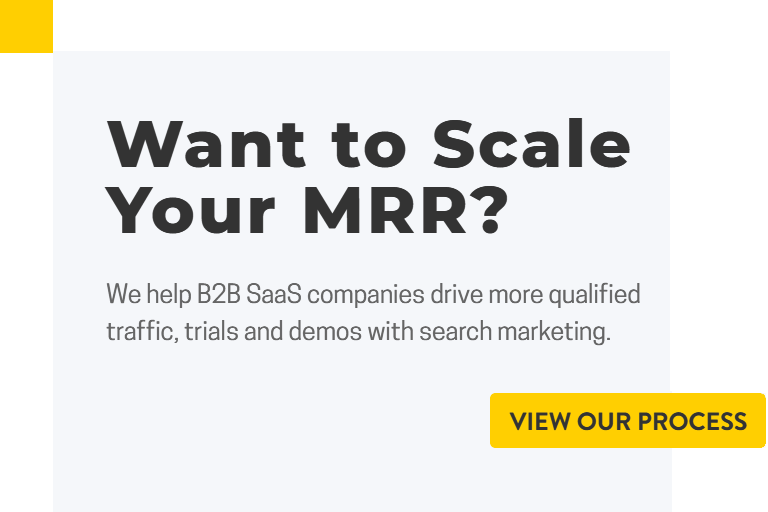If your SaaS business offers a free trial, there’s only one goal that should drive you: converting as many of these trial users into paid customers as possible. Here are some statistics to get your mind in motion:
- 66 percent of SaaS companies report conversion rates of 25 percent or less for free trials that require a credit card.
- The average conversion rate is 15 percent for SaaS businesses using an opt-in free trial. However, the rate increases to 50 percent for opt-out trials.
While these numbers are encouraging on some fronts, there’s a common theme: a large number of trials don’t turn into paid accounts. With this in mind, it makes more sense to focus on the trial-to-paid conversion rate than to spend additional resources on new acquisition. Remember, you already have a base of users who are interested in what you’re offering. Even a small lift in trial-to-paid conversion can have a big impact on your bottom line, thus providing more budget to scale broader acquisition efforts such as ad campaigns and SEO. How do you increase your trial to paid customer conversion rate? We asked 24 SaaS CEOs, founders and marketers to share the tactics that have helped them convert more trials to paid accounts. The most common strategies are listed below, along with each expert response. 
7 Ways to Convert More SaaS Trials into Paid Customers
Here are seven common tactics cited by the experts.
1. Use Live Demos to Reach the “Aha!” Moment
Anyone can give a live demo, but there’s more to it than meets the eye. The goal of every live demo is to help the prospect reach their “Aha!” moment. This is the moment when they realize the value in your product. Strive for this to happen as soon as possible, ideally during the initial trial or onboarding. Monica Lent, Founder of Affilimate, uses live demos to move prospects toward their “Aha!” moment before the end of their trial. She offered the following advice: “We offer free 20 minute demos to anyone who is a new user. Numerous users have converted right after the trial after being led through more complex features that they might not have discovered while exploring on their own.” Don’t assume that a prospect will stumble upon their “Aha!” moment. Use live demos to show them the way.
2. Use Sample Data to Help Onboard New Users
There’s a right and wrong way of onboarding new trial users. Take your user through a guided tour by providing a high-level overview of the software, with the goal of showing them how to reach the outcome they’re seeking. Don’t walk them through every feature. Instead, use sample data to help onboard them, as it allows them to visualize how the software will work for them. Alexander Yumashev, CEO of Jitbit Helpdesk, shared the following advice: “Do not start with an empty screen, but instead have some sample data that guides the user through the basics.” An empty screen is intimidating. It forces your prospect to visualize the software in action, without any sample data to show them how it works. Slack is a good example of how to approach this, with just the right amount of interaction.  Remember, the goal here is to make it easy for your prospect to see themselves using your software.
Remember, the goal here is to make it easy for your prospect to see themselves using your software.
3. Follow Up Quickly
You snooze, you lose. It may be an overused catchphrase, but it definitely holds true when following up with new trial users. There’s no such thing as too fast. You’re not coming on too strong. You’re engaging your prospect, which increases the chance of converting them to a paying customer. Users who are active for 3 days are 4x more likely to convert. A concise follow-up email after every stage (signing up, live demo, etc.) of the free trial prompts your users to take action. 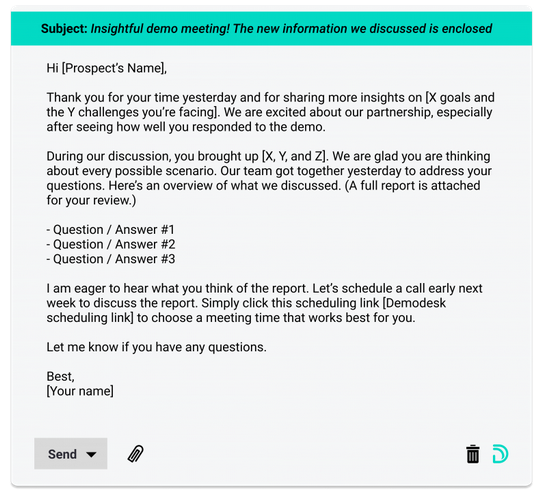 Imagine sending this type of email to a prospect immediately after a successful live demo. Your prospect doesn’t have to worry about reaching out to you and/or navigating the unknown on their own. You’re actively getting in touch to sum up the demo, address their concerns, and provide more information on next steps.
Imagine sending this type of email to a prospect immediately after a successful live demo. Your prospect doesn’t have to worry about reaching out to you and/or navigating the unknown on their own. You’re actively getting in touch to sum up the demo, address their concerns, and provide more information on next steps.
4. Set Up End-of-Trial Emails
In a perfect world, every trial user would quickly fall in love with your product and sign up for a paid account without any need for a nudge. But in the real world, reminders are critical to turning trial users into paying customers. Use end-of-trial emails to:
- Remind the prospect that their trial is coming to an end
- State what will happen once their free trial ends
- Outline the cost of upgrading to a paid account
- Share the features associated with a paid account
Here’s an example of how to structure an end-of-trial email: 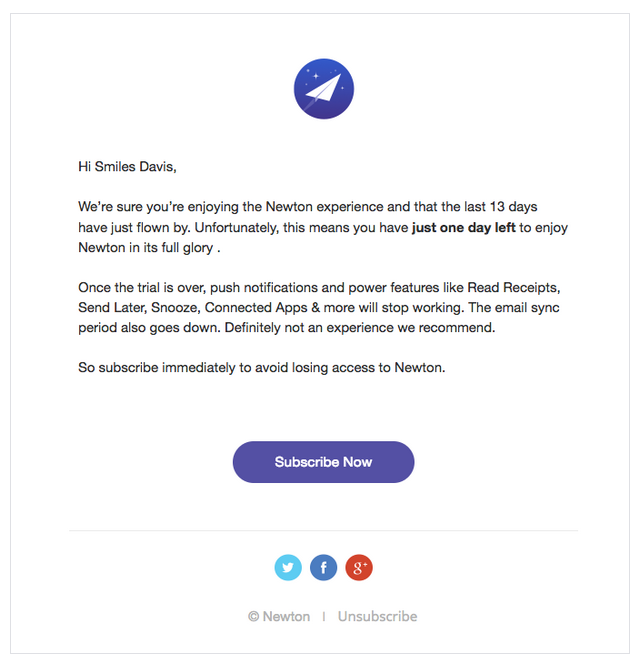 It’s concise and informative, with just the right amount of “selling.” And of course, there’s a “Subscribe Now” button for a seamless upgrade experience.
It’s concise and informative, with just the right amount of “selling.” And of course, there’s a “Subscribe Now” button for a seamless upgrade experience.
5. Use Promotions to Create Urgency
By using promotions to create a sense of urgency, your prospect has more reason to take immediate action. As a SaaS business, you’ll need to get creative in how you create urgency. After all, you don’t have a physical product with which you can attach the “selling out fast” moniker. The best tactic is to attach a timeline to the free trial. Here are some common examples:
- Try it free for 7 days
- 30-day free trial
- Try for free – limited time only
This does two things. One, it attracts the attention of your audience, as everyone likes “free.” Secondly, the urgent tone of the messaging increases the chance of the prospect taking action. This approach also works well when creating end-of-trial emails. Here’s an example: 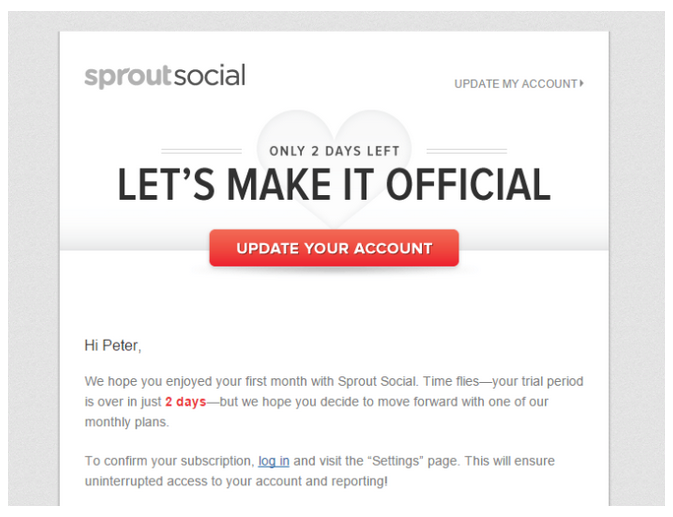 A trial user is just that. They have access to your software for a limited period of time. Use this to your advantage by creating a sense of urgency.
A trial user is just that. They have access to your software for a limited period of time. Use this to your advantage by creating a sense of urgency.
6. Engage Users With Intent-Driven Nurture Sequences
You understand the importance of engaging free trial users via email. But what you may not realize is that there’s a right and wrong way of doing so. The best way to engage users is with intent-driven nurture sequences. Read that again. It’s all about intent. Lincoln Murphy, a growth consultant at SixteenVentures, says it best: “If you’re still sending emails based on a timed sequence instead of triggered by actual user behavior, you’re 100 percent doing it wrong.” With time sequences, every trial user receives the same email. The problem with this is that every user is different. Some are active, some aren’t. Some are on the brink of converting to a paid account, while others are leaning the other direction. Every user will use your software in their own way. And every user will progress through your funnel at their own pace. With intent-driven nurture sequences, you can provide every type of user with messaging that best positions your product. Adam von Reyn is the VP of Marketing at Parlor. He shared the following advice on how to engage trial users with intent-driven nurture sequences:
- Use your nurture flow to ensure that every user is getting value from the trial
- Target prospects with relevant messaging at every stage of the process (account creation, active trial user, dormant trial user)
- Personally reach out to top prospects to understand their goals and the factors driving their purchase decision
Email nurture sequences have evolved over the years. Gone are the days of time-sequenced engagement. Today, it’s all about intent.
7. Build a Knowledge Base
Let’s face it: you can’t be available to trial users 24 hours a day, 7 days a week. Furthermore, some users won’t feel comfortable reaching out directly. Fortunately, a knowledge base allows you to be responsive to your users’ needs at all times. A knowledge base is a library of support and tutorial content (including articles and videos), built to answer every question a user may have. Here’s an example of a knowledge base: 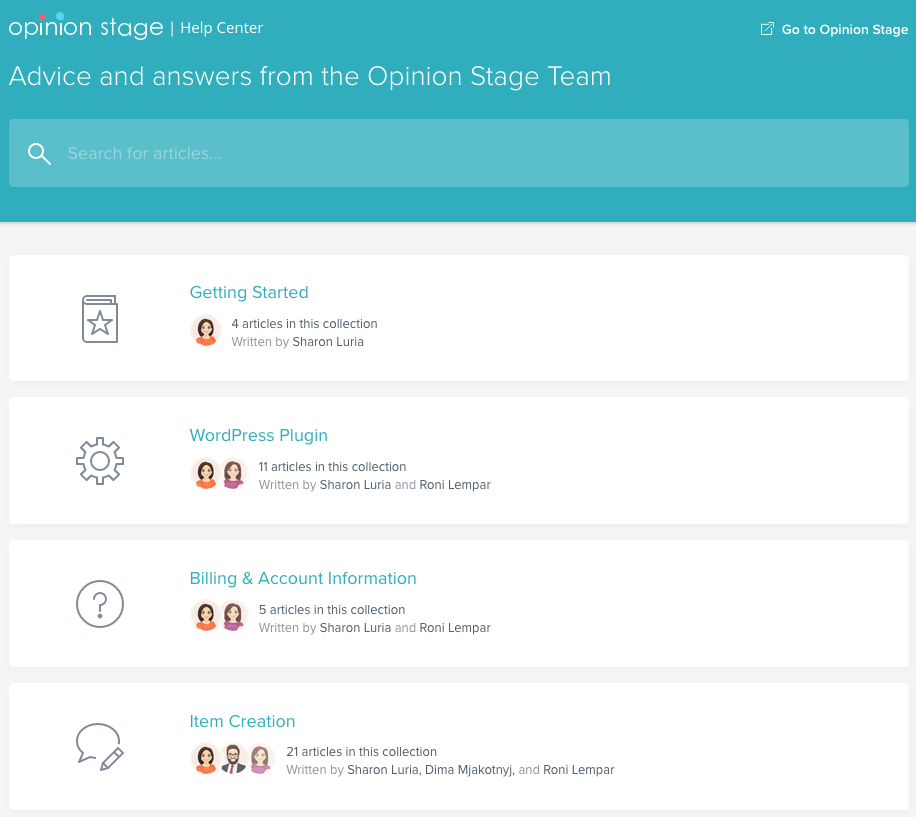 You can search for an article by typing in your query, such as “how to update my account” or “how does XYZ work.” You can also browse by category, such as “Getting Started” or “Billing & Account Information.” Yes, it’s time-consuming to create a comprehensive knowledge base, but it’ll save you a lot of time and stress in the long run. Not to mention the fact that it engages your users, provides them with guidance and helps you better understand which pieces of content are most important to your audience.
You can search for an article by typing in your query, such as “how to update my account” or “how does XYZ work.” You can also browse by category, such as “Getting Started” or “Billing & Account Information.” Yes, it’s time-consuming to create a comprehensive knowledge base, but it’ll save you a lot of time and stress in the long run. Not to mention the fact that it engages your users, provides them with guidance and helps you better understand which pieces of content are most important to your audience. 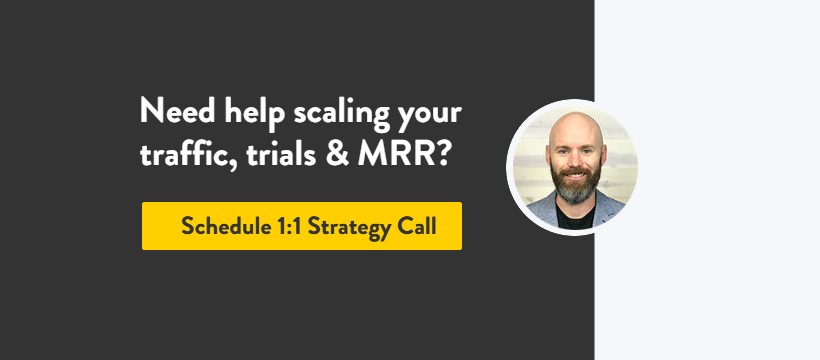
24 SaaS Marketing Experts Share Proven Tactics to Convert More Trial Users Into Paying Customers
Ryan Dunagan
Product walk through’s are critical to help free trial users get to the “ah-ha” moment on the value proposition of your product. This can be done through a few channels include – In-app, email, and retargeting. Another tactic I’ve seen work well is to take a subset or sample of your product such as a guided demo or basic explainer video to help exist trial users get a better understanding of how the product show work and be configured.
Mike Puterbaugh
We try to get our trial takers to the “a ha!” moment as quickly as possible – in our case, that means starting a new proof and sharing it with a team member for comment. So our trial nurture communications are focused on that from the outset. For well qualified prospects, we’ll also offer a live demo, in their trial instance with their own creative assets. It serves as an effective pre-sales on-boarding in a way. This would include inviting a wide range of team members into the account. Ziflow has a network effect component to it, so the more people using it within a team or organization (and beyond) adds more perceived value.
Adam von Reyn
Build a strong nurture flow to engage your free trial leads and provide support materials to ensure they’re getting value from the trial. Understand the different stages of trial engagement (e.g. account created, active trial user, dormant trial user) so that you can target prospects with relevant messaging to advance them to the next stage. For higher contract value products, reach out one-on-one to build rapport with the prospect, learn their goals and understand what will drive a purchase decision.
James Winter
Techniques will vary by company and a list of tactics are likely meaningless. What’s more important is having a solid understanding of what the value you’re looking for them to get to, how fast can you get it to them, how much effort will be involved on their end, and how many people need to be involved. A trial should be thought of as a commitment, even if it’s free. You should assume that 90% of users are not invested or informed enough to make the most of a trial, always build the experience for the lowest common denominator of user so that you mitigate the risk of them having a bad experience.
Michal Suski
Free trials aren’t better than paid trials! Tire kickers reduction with just a small payment makes a huge difference. People who are not willing to pay $1 for a trial won’t be your future clients, or it isn’t very likely at least. We switched from a free trial to a paid trial at Surfer, and it did the trick not only for the higher conversion but for the onboarding quality. Which, indirectly affected the conversion. When you deal with hundreds of users where only 30% are your clients, you can’t serve them on the same level of quality. Walkthrough calendar is full, live chat and email have a slower response time. Did I mention that a free trial has another pain, which is fraud? For some SaaS businesses, free test drive may work, but it didn’t for us. Of course, you need more credibility to ask for the card and process payments, but it’s worth it at the end of the day. This way, you attract decision-makers and show that it is a real thing, not another email collecting app that does nothing.
Aaron Dun
1. Gain more insight in the form process. “Fewer fields convert better” we have been told, or we have tested to confirm. But in our effort to trim down our forms to the bare minimum we are missing out on all the data we could really use to grade a prospect. Instead, think about the moment right after the form submit, that landing page or pop up that says “thanks, we will be in touch,” or “do this next” as an additional data gathering step. Your prospect has relaxed, they have done “The thing” they were supposed to do by hitting submit. Their guard is down. Boom, now is the time to ask those additional qualifying questions in a follow up form. These should be in the service of making the experience of the trial go better, but are also nuggets for your sales team to make sure they focus on the right trial accounts. “How many users do you have on your team” or “what other tools are you using in your environment” are two come to mind. CRITICAL: this is not another gate! Let me say that again, this is NOT another gate. Let the initial submit start the process regardless of if they continue. If the prospect ignores the rest of the questions then let them move on. At one company we found that 80% of prospects who submitted the form at least started the post form experience, and a full 60% completed it. Absolute gold for the sales follow-up process. (and you have a PLG or Freemium model, it will still be useful data in your targeting and conversion process) 2. Reduce ALL of the friction Be ruthless. Leverage design thinking strategies to draw out everything your prospect must do from the moment they hit your website (or even before), all the way through the trial and buying process. You are going to need a really big whiteboard (physical or virtual!), but document every single step, decision, required content etc. And then start drawing x’s through as much of it as you possibly can. Every thing on that whiteboard is friction that is slowing your prospect down. Each one you remove is getting your prospect closer to value.One thing I see a lot is “email verification” where we send you a link to get started on the trial. This is a place where trials go to die. You have them hooked, they submitted the form, GET THEM IN THE EXPERIENCE as fast as possible. Don’t make them wait for an email. Don’t make them go look in their spam folder. Don’t let them get distracted. I realize that often times that is how the account creation process works, but with some clever engineering, I know you can find a work around.3.Find the moment of “aha” and get them to that point a fast as possible What is it about your product that takes prospects from “interested” to throwing their money at you? What is that moment on a demo where the prospect shifts from passively watching to sitting up and grilling you about how it works/could work in their environment? That “moment of Aha” is critical to understand, and then get your free trial users to that moment as fast as possible. Some quick ways I have used to get there: 1. Add something like Walkme to guide people where they need to go. Products are rarely intuitive to outside users, you have just dumped them into a blank canvas, what should they do first? 2. Include a “guide to successful trials” as part of the sign up process to help prospects on their journey. 3. Set up an email cadence that starts on the day that they sign up, and runs the duration of the trial. Things like l “it’s day 2 have you done this yet?” “It’s day 5, other trial users are here.” All in the service of getting them to that Aha moment. 4. And if your economics support it, have sales follow up with the best/highest quality prospects and check in with them to be sure they are getting value from the trial.4. And a final Freebie: Test the *** out of everything! Create a nimble structure that allows you to test every element of the process. Which lever reduces the most friction? Which action gets them to the Moment of Aha faster? What signals an engaged prospect that is ready to buy. etc. Test everything. Literally everything to find what works best for you.
Tom Hunt
Just one… It’s hands down the MOST effective way of converting trials to customers whilst also learning about these people (which is the real point of this ;)). It will also take you just 7 minutes to set up… All you do, is get a call booking link, create a 15 minute meeting called: [[PRODUCT NAME]] Onboarding Call. You then write a very short and simple welcome email to all new free trial users that has just one call to action… to jump on an onboarding call. This way you get to ensure they see the products true value AND you get to learn about their problems so you can feed that back into your product roadmap 😉
Chris Prasad
We have an increase of 22% from lead to paying customer when contacting the lead in the first 3 minutes of signing up with a phone call. The earlier the potential client is contacted the higher the chance of becoming a paying customer.
Kas Andz
SECURING PAYMENT INFO BEFORE TRIAL. You can offer a discount after the trial period and even offer rebates. E.g. You cannot use Netflix without giving your details. And since you’re hooked on a series and it’s easy to move forward to paid subscription, with sign-up out of the way, you go for it. END-OF-TRIAL EMAILS. You need to direct the consumer and let them know what the next move is. Sending an email with details on what they can do next makes a big difference. E.g. Spotify doesn’t require you to put payment details but are constantly sending you email reminders of the features of a paid premium account. They show you how insignificant the cost is in contrast to the benefits unlocked. URGENCY & SCARCITY. Create a sense of urgency by offering certain promotions that feels exclusive or limited for your customers. E.g. Sign up now and get one month free. Limited time offer 10 days left. Do it within reason though!
Dennis Vu
One of the best tactics for turning free trial users into paid customers is to send them in-app messages once they reach their first “aha” moment. You probably already know what this is – the first moment they see the value in your product. This is the time to shoot them an email, send them a message within the app, a push notification – a message of any kind asking them to subscribe to your product. There is no better time to convince them that your product is worth their hard-earned cash. It’s actually fairly easy to set this up, as long as you know your customer journey.
Alexander Yumashev
1. Do not start with an empty screen, have some sample data that guide the user though the basics. Along with onboarding JavaScript-based “tutorials”, like “click here to close this support ticket” or “press this button to this Knowledge base article”, but don’t push it too hard. Make it occasional. 2. Onboarding email sequence, like “invite your team” or “complete your first XX” can be a really effective tactic. 3. One of the most effective tactics is asking for a credit card upfront. But it lower the visitor-2-trial conversion and really depends on the niche you’re and have you reached a solid product-market fit.
Saroj Ativitavas
1. Timing: No matter how long they try out the service, they are not going to pay unless they see the real value in it. So keep them in free-trial mode and regularly communicate with them about the value or new features, wait until they are addicted to the service (monitor the analytics) that that’s the right time to block them with a payment wall. 2. Pricing: If they are small SMB then they are going to pay too high price so we can have different price point for SMB and large corporate for example, if their annual revenue is less than $1M then they are eligible to lower price. You don’t need to reveal the price publicly in the website, just tell everyone that we have special price for SMB then privately inform them after they show interest and proof of company identity and size.
Saul Fleischman
What would you do if you could advertise when you share Tiktok videos? Absolutely anyone’s Tiktok videos? Here’s what I did first: https://twitter.com/Rite_Kit/status/1262926782099005440 The ads are whitelabel, too. You’d replace that lower-right logo with your own logo(s), and they click through to wherever you set them to land people.
Elton Kuah
Video Demo – As I am working on showcasing the use case of platform such as Sharpspring and Perfect Trial (where we gave away 100 USD in ad spend), a video demo of how to maximize 100 USD spend, challenge milestone of typical ad retargeting compared to system used by Perfect Audience. Also, rather than just writing typical blog review, I am interviewing the depth of user challenge of rather than really just writing in form of G2 type review. This would be one personalized method.
Vincent Bucciachio
It’s the same hurdle with most start-up SaaS clients that engage with us—roughly 75% of SaaS trial users will stop using their product in less than a week—and they want our help. We start by asking for the reason they think the user stops, and we usually get an ‘I don’t know.’ Fortunately for us, the answer is almost always the same. The user could not see the value, or they weren’t able to use your product effectively. So, you want to convert trials into subscriptions? Then it is vital to onboard your users with passion.Remember, your new users are precisely that; new to your product. They might understand the basics, but a touch of guidance will help to drive your value offering. This is the critical stage where a user actually uses your core product value offering to solve a problem they have. Your chief priority is to get every new user to this moment as soon as possible.You can use onboarding screen shares, recorded walkthroughs, in-app messaging, automated chatbots, gamification, video tutorials, etc. All these methods are beneficial in the appropriate situation. For example, Slack, the SaaS-based collaboration hub, does a beautiful job of engaging with their trial users, and we know where they are today because of it.
Maja Winiewska
Excluding traffic and leads with a lower potential from paid search, display and social media campaigns (less trials but higher convertion rate to a paying customer and decreased budget) fast response and high quality customer service standards – contacting a lead the same day it registered. Creating a customer journey that allows a customer to use a service themselves in its fullest (almost without any help of customer support), providing customers with materials, tutorials, screencasts and tips on the way.
Mehul Shah
We are executing various strategies at this point in time to convert more users from free trials to paying customers. Some of them are as mentioned below: 1. Set-up a drip campaign covering all the touch-points of the customer journey and make the emails personalize. If you will keep on sharing many promotional emails than the chances of getting conversion goes down. Instead, share emails educating the users to your niche and also to the platform. Explain how your platform can solve the pain points of the users. We did this and we are seeing a conversion jump from 9% conversion to 12% conversion (Our niche is highly competitive). 2. Our customer success team plays an important role in converting more users from free trials to paying customers by responding to each query within minutes. Our average response time is less then 2 minutes. So when the users get answers to their queries instantly, it creates a trust factor and they start to believe in the product and eventually gets converted to paying customers.
Allison Chaney
Reducing the time frame on the free trial. Providing a document that details the steps to using our training platform, to help guide users on how to best use the online courses.
Nick Malekos
We work a lot on customer education, and as a learning platform SaaS, we utilize our own academy (https://academy.learnworlds.com/) to onboard and educate our customers. We see that anyone who joins the academy is 4 times more likely to convert into paid customers compared to only signing up for a trial account. Another important conversion tool is our webinar. We do weekly demonstration webinars and again, anyone who joins is far more likely to convert (https://www.learnworlds.com/webinar/). Facebook remarketing is also a huge part of it. We have tested stopping remarketing for a week a couple of times and conversions drop drastically. For more complex SaaS products, education is a huge part of driving adoption, shortening the learning curve and leading a user through the journey to buy. I actually talked with Dylan Hey on his podcasts on those exact 3 points https://www.youtube.com/watch?v=MaAjnGqNuuo
Henry Cazalet
Technique #1 Don’t rely on your marketing automation to convert your customers. Most software companies spend huge resources and energy trying to perfect their marketing automation strategy. This is money well spent as it smooths the path between a trial user and a paid customer with minimum manual intervention. But it’s sometimes this lack of personal interaction means that our understanding of customer requirements goes missing. In our quest to automate our business, we often overlook the most persuasive element of all, personal relationships.So our most successful technique to improve conversion has been to identify free trial users where we can immediately see a strong match with our product.We then contact them through a number of channels and begin to really understand what the customer is trying to achieve. Why did they go for a free trial? What was their motivation? Are they using it for a one-off project or is it an ongoing requirement? Have they come across any problems or barriers? Was there anything that fell below their expectations? We ask lots of questions and listen intently to the answers. We try to really understand what the customer is trying to achieve. By doing this, we’re moving away from a marketing automation model and towards a consultancy model. The result of this approach has been dramatic. When we don’t make personal contact with a free trial user, our conversion rate is 7%. The conversion rate rises to 15.8% if we take a consultative approach. Our outreach technique is now the single most important part of our conversion strategy. Technique #2 Ask your existing paying customers this simple question. One major problem with free trial customers that don’t convert, is that you can’t often find out why they didn’t become paying customers. Once they’ve decided not to buy your product, they’re unlikely to respond to your emails, calls or surveys. You’re left in the dark, wondering what the problem was. How can you improve your service if prospects are reluctant to share the reason they didn’t buy? The answer is to turn to your existing customers and ask them this simple question. What are the 3 things that nearly stopped you from becoming a paying customer? By inviting existing, paying customers to share the top reasons that almost prevented them from converting, you can tease out some of the main issues that non-convertors faced. It’s a simple technique that can allow you to identify problems, make changes and improve conversion. It’s a variation on a question that Conversion Rate Experts came up with a couple of years ago. https://conversion-rate-experts.com/ We used this simple technique to discover that there was a massive issue with one element of our technical documentation.
Shane Barker
One of the best ways of converting trials into paid customers is through discounts. This method can help you convert freemium users who’re not becoming paid customers due to their budget constraints. As soon as you slash the prices, they’ll be more likely to pay for the service. This strategy also helps me leverage the fear of missing out (FOMO), which boosts my conversion rates.
Jeff Solomon
For context, I founded Velocify, SaaS Lead Management software, sold in 2017 for $128MM. After building a decent client base we realized we learned a lot of best practices about how our clients used our software. And while like any CRM system, we had a ton of customization, we decided to create what we called “best practice templates” for each of our major verticals: Financial Services, Insurance, Education, Automotive, that were FIXED and could not be edited. All trial clients started with a best practice template and they could not modify them for the first 60 days. We had data and performance from other clients (that were competitors to them) and were able to demonstrate that they would be more successful to just trust the template at first vs. trying to customize the solution to their wants. Most of the time when we let new clients customize the software it ended up costing us a ton of time in customer service and they usually just messed things up and often churned. Once we introduced the template model we reduced onboarding overhead by at least 30% and increased retention from 4.9% (monthly) before to 3.2% (monthly) after just running the program for 1 month. Trial conversions also increased from roughly 14% to 22%. We doubled down on this strategy and built more best practices templates for smaller client verticals and we began to publish quarterly industry specific white papers based on the performance of clients in those verticals that used our best practices. There is a lot more to the story, but hopefully this gets the idea across.
Nikola Baldikov
I’ve found that maintaining a line of communication during the free trial produces the best conversions results. We take the time to call each of our free trial customers in the first days in order to touch base and see if they have any questions. This direct connection helps to establish a human link with the customer, which can lead to a higher likelihood of conversion. We also offer free demo sessions for each of our customers at the beginning of the trial. In that way we can connect with them, and make sure that they’re acquainted with all of the features we offer. During these sessions we educate customers with different tutorials, and take time to discuss their specific needs and how our product can meet them. Of course you can’t convert every client, but by talking about their unique circumstances you can ensure that at least they’re making an informed decision as to whether they’ll become paying customers.
Monica Lent
1. Offering a live demo to new customers before the end of their trial – We offer free 20 minute demos to anyone who is a new user. Numerous users have converted right after the trial after being led through more complex features which they might not have discovered while exploring on their own. 2. Building a community via a Facebook group – Within a smaller niche/community, people are happy to see their friends are also there and can ask each other for help. It’s also a form of “social proof” because they can see and interact with users they know are successful. 3. Honestly – just not offering to extend a trial. People might ask for more time to try the tool, but in our experience the best conversion came after sticking to the 30-day trial period and then offering a more personal onboarding experience if they decide to sign up. If we extend it, we keep the duration as short as possible so they have to make an decision while the demo was fresh in their minds.
Kaz Driver
Ensuring what you say your product or service will do, it does! Often, there is a significant gap in expectations and reality when a potential customer signs up for a trial. For example, not all features may be available for use in the free trial, which can be annoying. The whole point of a free trial is to enable the consumer to use and check the product thoroughly. At the other end of the scale, there is nothing worse than thinking you are trialing the entire product at a certain price point and then you find out the trial has all the bells and whistles of the premium product, so you would have to pay extra to get what you have just tested. Businesses need to be fair and honest with what they are offering in a free trial. Why wouldn’t a prospect buy it if it ‘does what it says on the tin,’ is easy to use and set up, and there are no tricks with the full product, i.e., no hidden costs. Fair business practice is a strong part of Think Little Big Marketing’s ethics.
Which Tactics Are You Going to Try?
For a moment, forget about spending more time and money on new customer acquisition. Turn your focus to increasing the trial-paid conversion rate, as doing so will have an immediate impact on your bottom line. Once your conversion rate is on the rise, use the revenue to fuel ongoing customer acquisition, such as via SEO, outbound, social media, and paid ad campaigns. What are your thoughts on these seven tips? Do you have other strategies for converting SaaS trials into paid customers?


